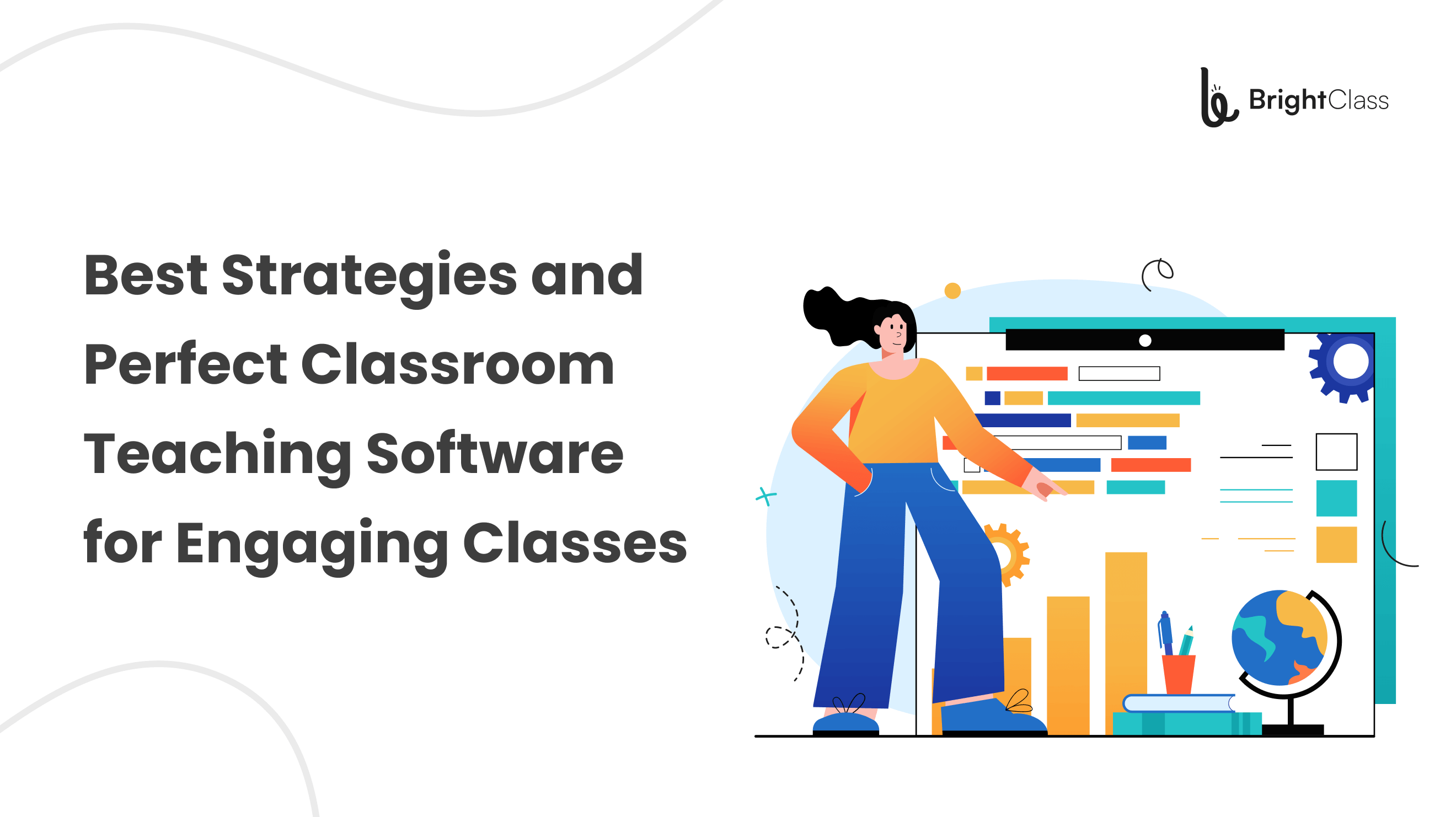
Best Strategies and Perfect Classroom Teaching Software for Engaging Classes
Learning, encouraging active participation, and improving understanding are all greatly aided by student engagement. Modern-day teachers need help keeping students engaged, particularly in online classes with many distractions. Classroom software and teaching software are necessary to narrow this achievement gap. In response to these difficulties, this blog will provide practical advice on how teachers can maintain lively discussions and active learning environments in the classroom. Teachers can catch students' attention and improve the educational experience by utilising technology and adopting novel ways to build dynamic learning environments.
Harness the Power of Technology
- Interactive Presentation
In the contemporary classroom, integrating teaching software is pivotal for creating dynamic and engaging learning experiences. Embracing interactive presentations with applications like BrightClass facilitates real-time engagement through polls, live quizzes, and instant feedback. Accommodating multimedia in teaching presentations and using interactive tools on an interactive display can make teaching more engaging.
- Online Platforms for Sharing the Resources
Software for online teaching offers collaborative spaces for students to share resources, fostering a sense of community in virtual environments. Internal communication channels propel student-led projects, promoting interaction beyond traditional classroom boundaries.
- Breakout Rooms
Teaching software catalyzes virtual breakout rooms, enabling instructors to facilitate group discussions, brainstorming sessions, or peer-to-peer learning online. This method encourages active participation and collaborative problem-solving.
- Gamifying and Simulating Concepts
Incorporating educational games and simulation tools relevant to the subject matter, like Phet, introduces fun and excitement, making the learning process more engaging and memorable.
Foster Active Learning Strategies
- Thought-Stimulating Activities
If we want our students to be actively involved in and understand what we teach, we must use active learning strategies. These approaches are enhanced by using classroom software, which offers a multidimensional learning approach. Start your class on the right foot by introducing stimulating warm-up exercises like icebreakers, short quizzes, or questions designed to stimulate thought. Create quizzes in a few seconds using the Bright AI of the BrightClass application.
- Group Discussions
Integrate group discussions into your teaching repertoire by employing guiding questions, assigning roles, and fostering active participation. This not only enhances communication skills but also cultivates a collaborative learning environment. Further enrich the educational experience by incorporating debates and role-playing activities, prompting students to analyze diverse perspectives and viewpoints.
- Student Presentations
Encourage student presentations, where individuals showcase their research or projects. This fortifies their understanding of the subject matter and nurtures confidence and practical communication skills.
- Include Multimedia into Lectures
Embrace multimedia elements like videos, audio clips, and images that enhance comprehension and engagement. Teaching software allows for seamless integration and management of these multimedia resources.
- Flipped Classroom Approach
Implementing a flipped classroom approach, supported by the best software for online teaching, involves providing pre-recorded lectures or reading materials for students to explore outside of class. This approach maximizes in-class time for interactive activities, discussions, and practical applications of knowledge, creating a more dynamic learning environment.
- Interactive Whiteboard
Utilize interactive whiteboards or digital boards to amplify visual representations and collaborative work, providing a dynamic platform for engaging classroom activities. Teaching software enhances the functionality of these tools, enabling smoother integration into lesson plans.
- Hands-on Activities
Incorporate hands-on activities that involve manipulation, experimentation, or exploration to reinforce theoretical concepts. Teaching software can assist in organizing and managing these activities, ensuring a seamless and efficient learning process.
- Break Long Lectures to Smaller Sessions
To break the monotony of traditional lectures, utilize teaching software to divide sessions into smaller sections. Intersperse lecture segments with interactive activities, Q&A sessions, or group discussions to maintain student engagement and promote a more participatory learning experience.
Encourage Individual Participation
- Asking Open-Ended Questions
In the realm of modern education, integrating teaching software is essential to foster individual participation effectively. Begin by asking open-ended questions that propel students beyond mere factual recall, stimulating critical thinking and robust classroom discussions. The use of teaching software can streamline this process, allowing for efficient tracking and analysis of responses.
- Peer-Learning
Promoting peer learning, facilitated by teaching software, involves encouraging students to teach one another through small group activities or collaborative projects. This not only strengthens their grasp of the material but also nurtures a sense of shared responsibility for the learning process.
- Different Instruction Modes
To accommodate diverse learning styles and needs, differentiate instruction by offering varied activities and resources. Utilize teaching software to manage and organize these resources effectively, ensuring seamless accessibility for students with different preferences.
- Personalised Feedback
Providing constructive feedback and recognizing individual student participation and achievements is crucial for motivation. Classroom software like BrightClass can assist in documenting and acknowledging student progress, fostering a positive and encouraging learning environment.
Summing Up
If education is to become more dynamic and engaging, cutting-edge pedagogical software must be used. Students are more engaged and learn more when teachers use technology like collaboration platforms, online quizzes, and interactive whiteboards. The most effective online teaching tools give teachers the tools they need to make their classes more engaging and interactive for students. Educators may foster student engagement and knowledge retention by utilising technology to turn static classrooms into dynamic, interactive learning spaces. Keep up with the rapidly changing world of education by using these tools to create an engaging and collaborative classroom environment where students can achieve better outcomes.